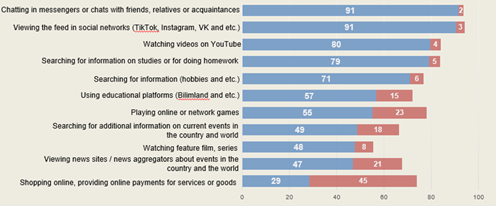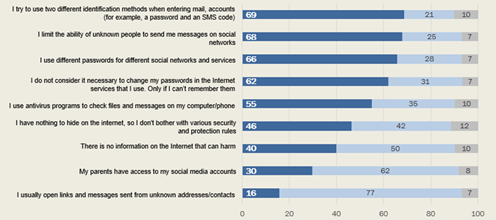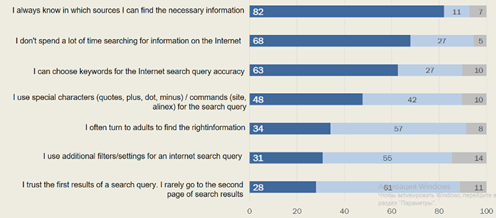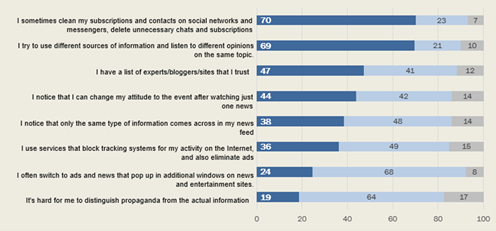
Media and information literacy of schoolchildren of Kazakhstan: research results
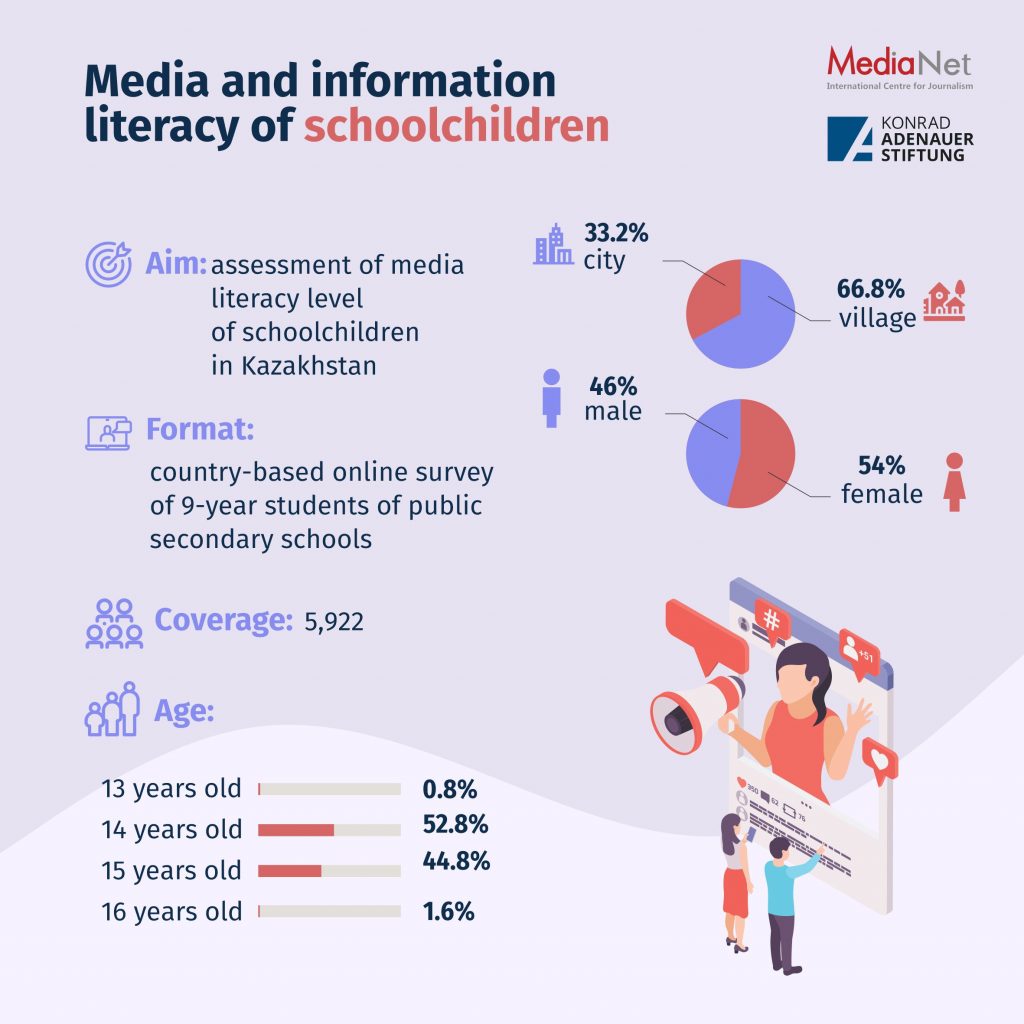
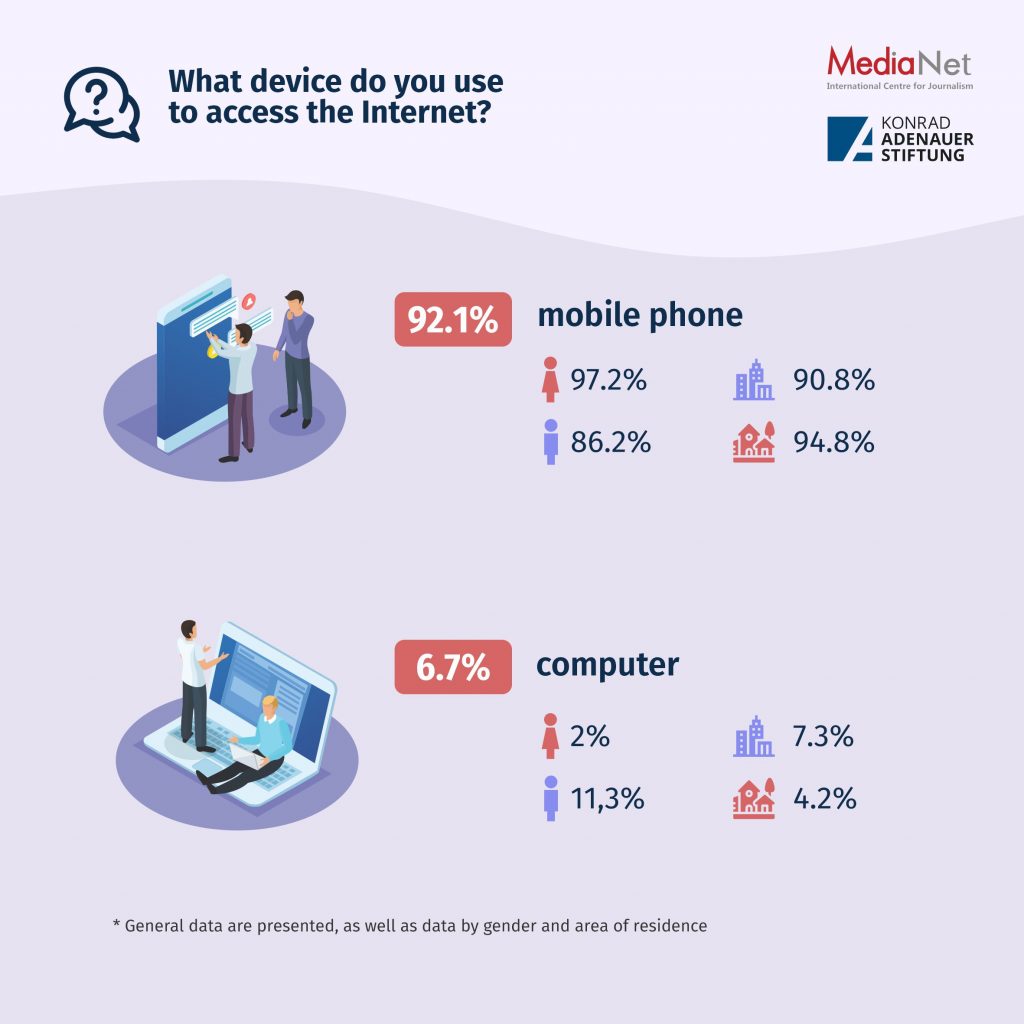
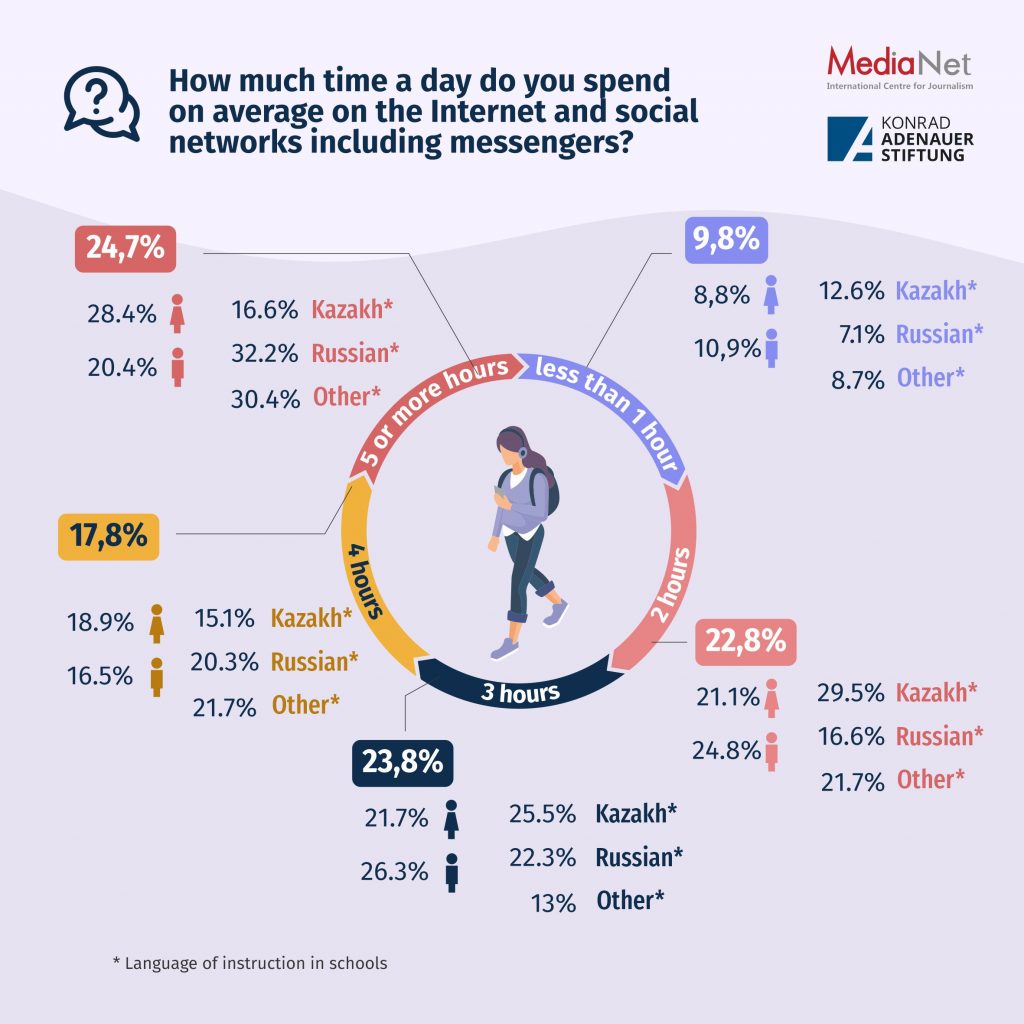
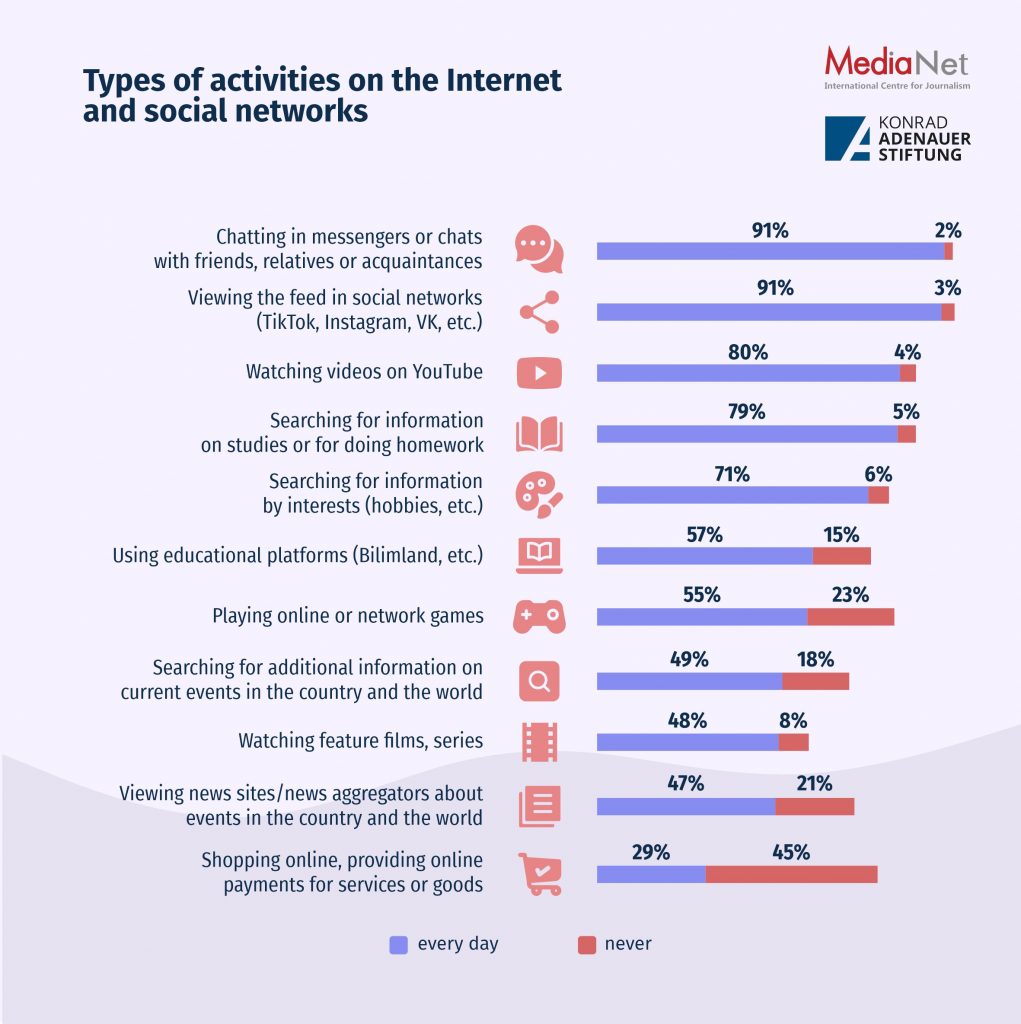
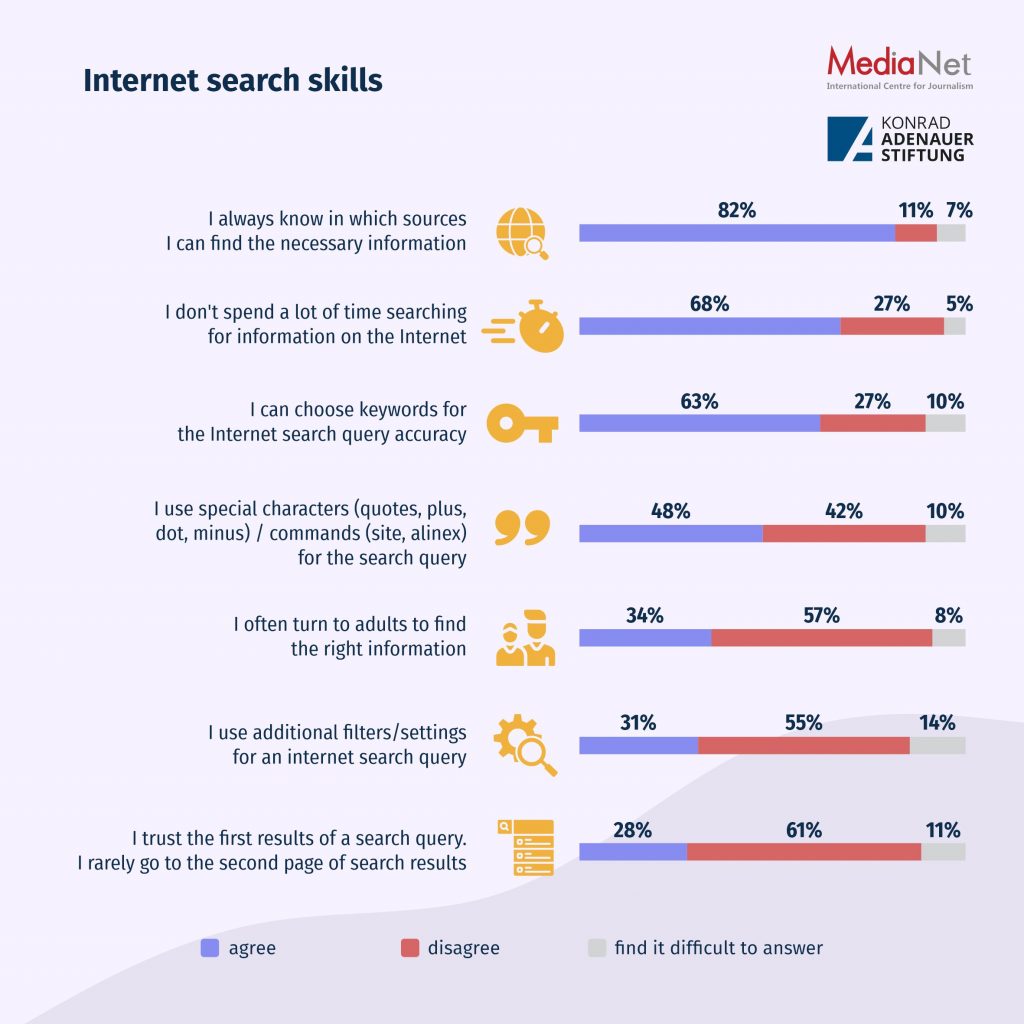
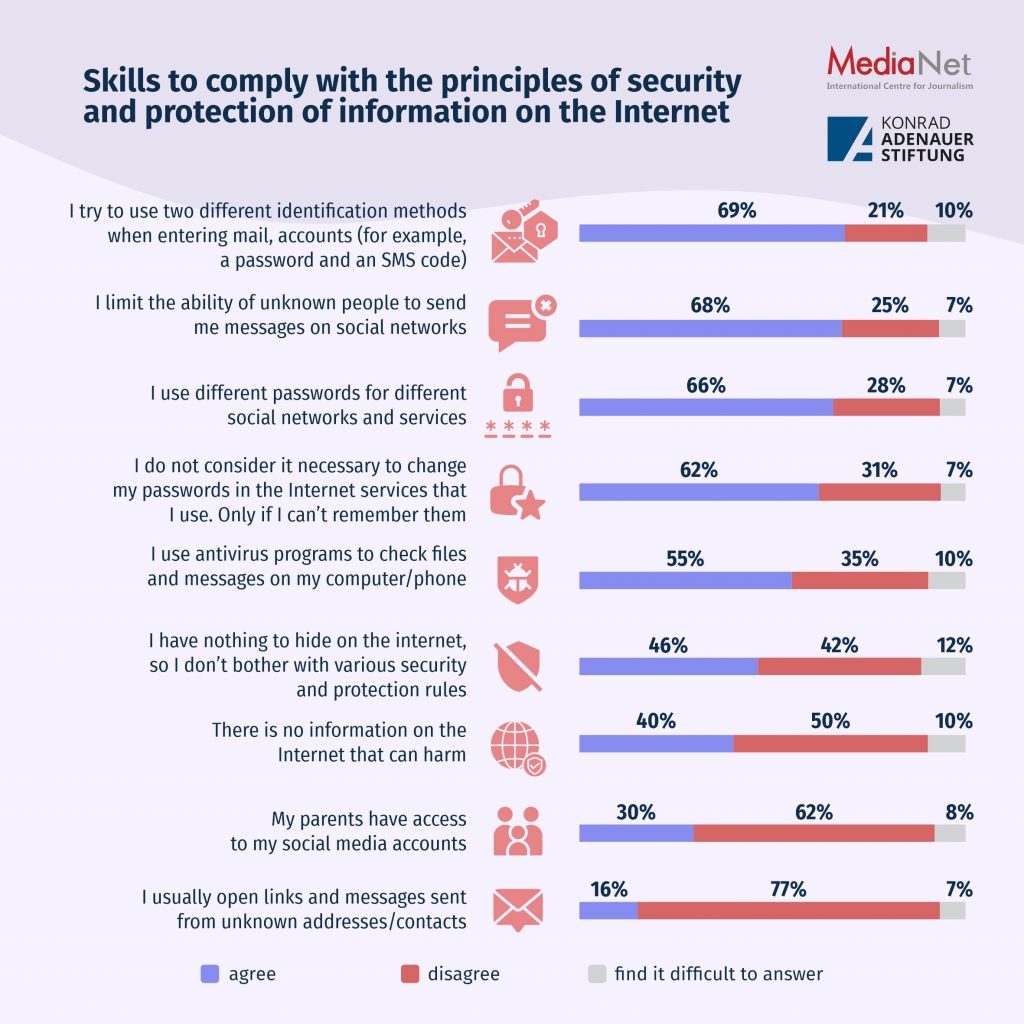
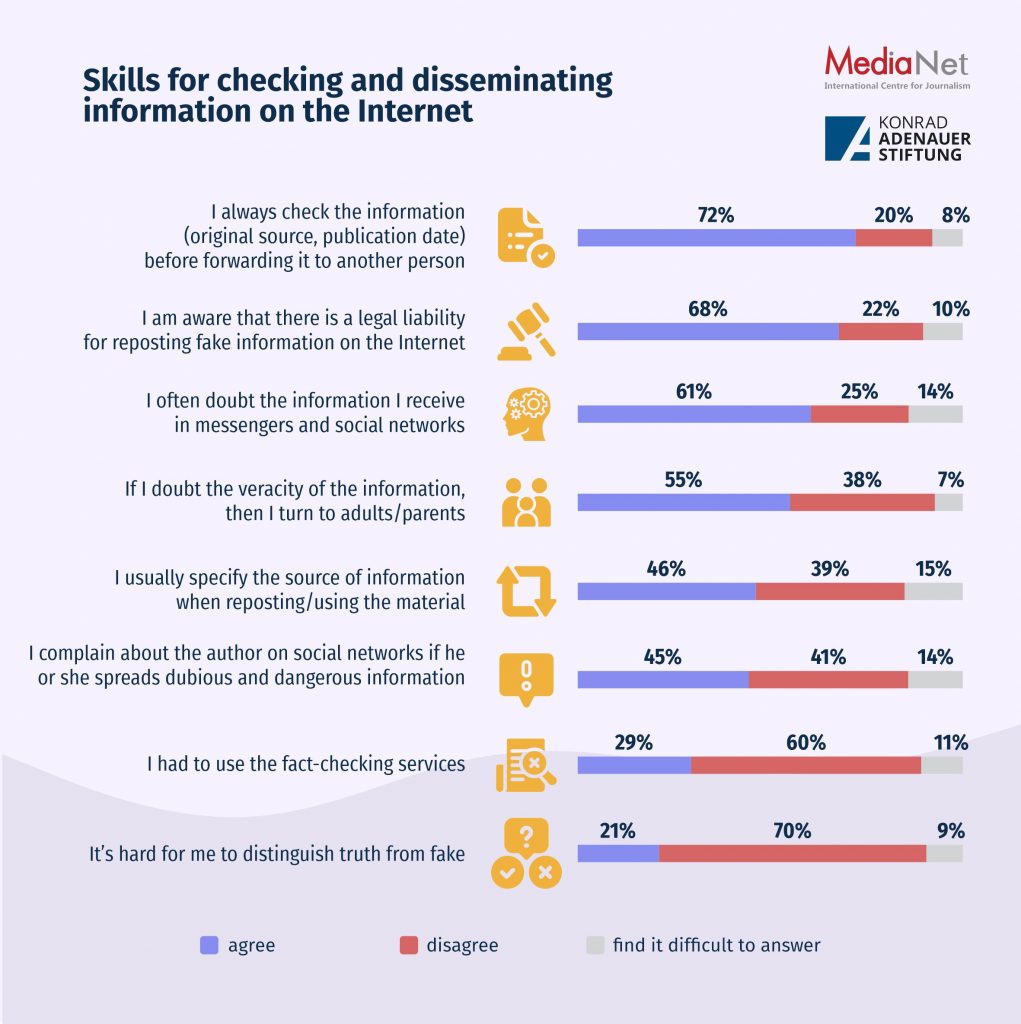
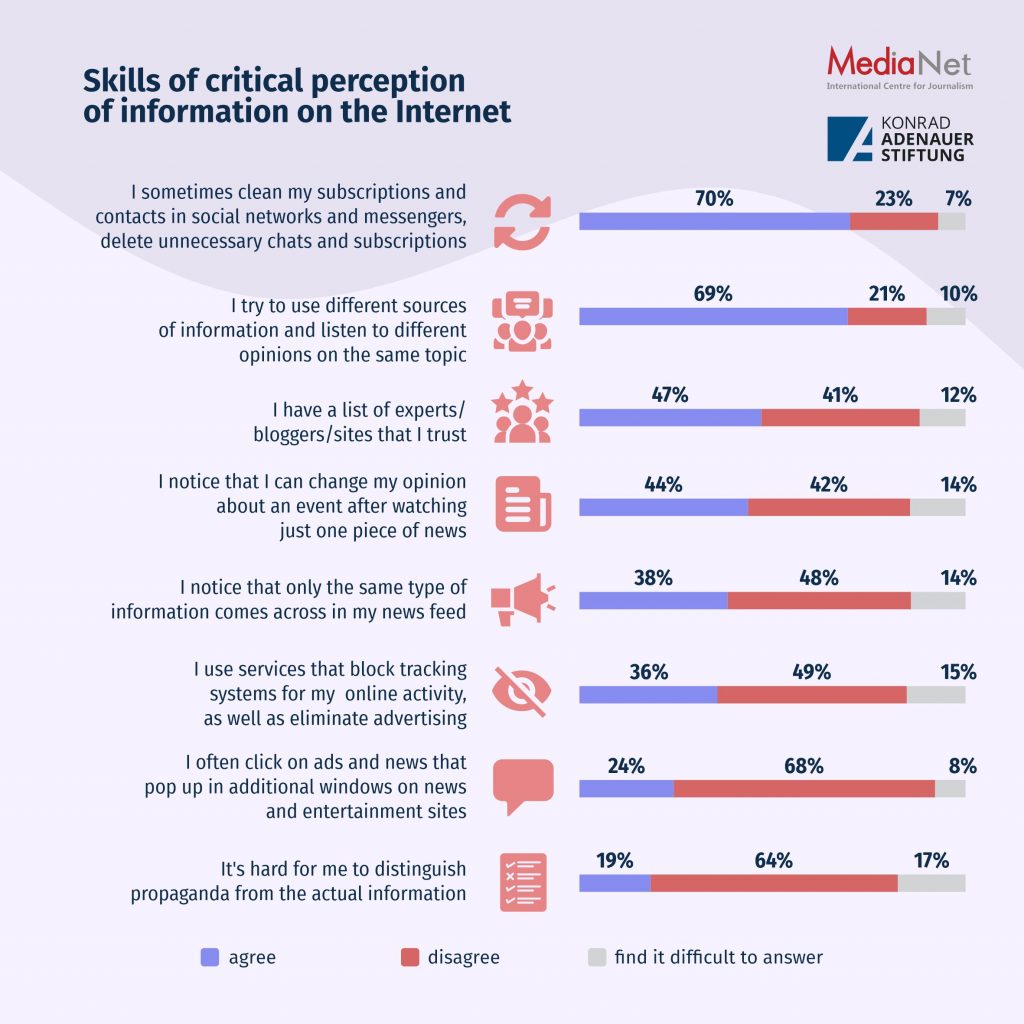
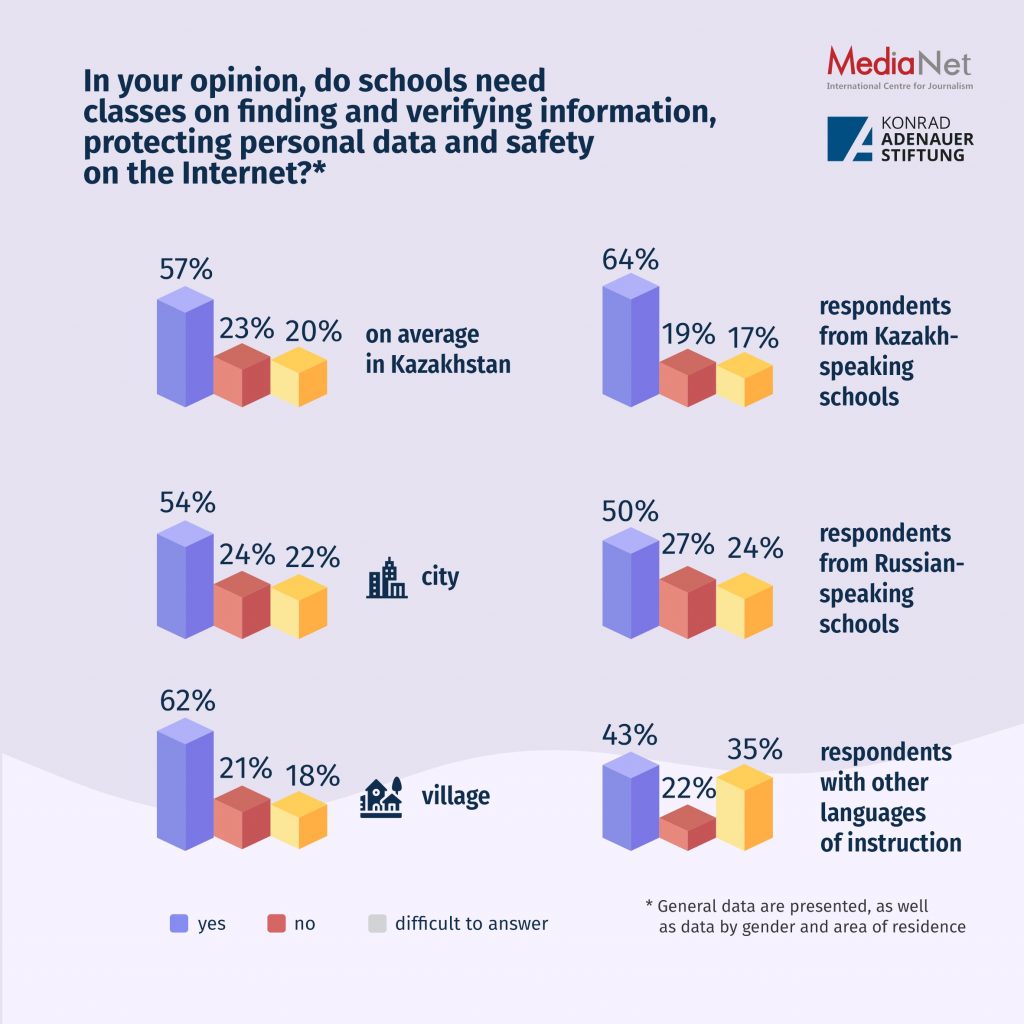
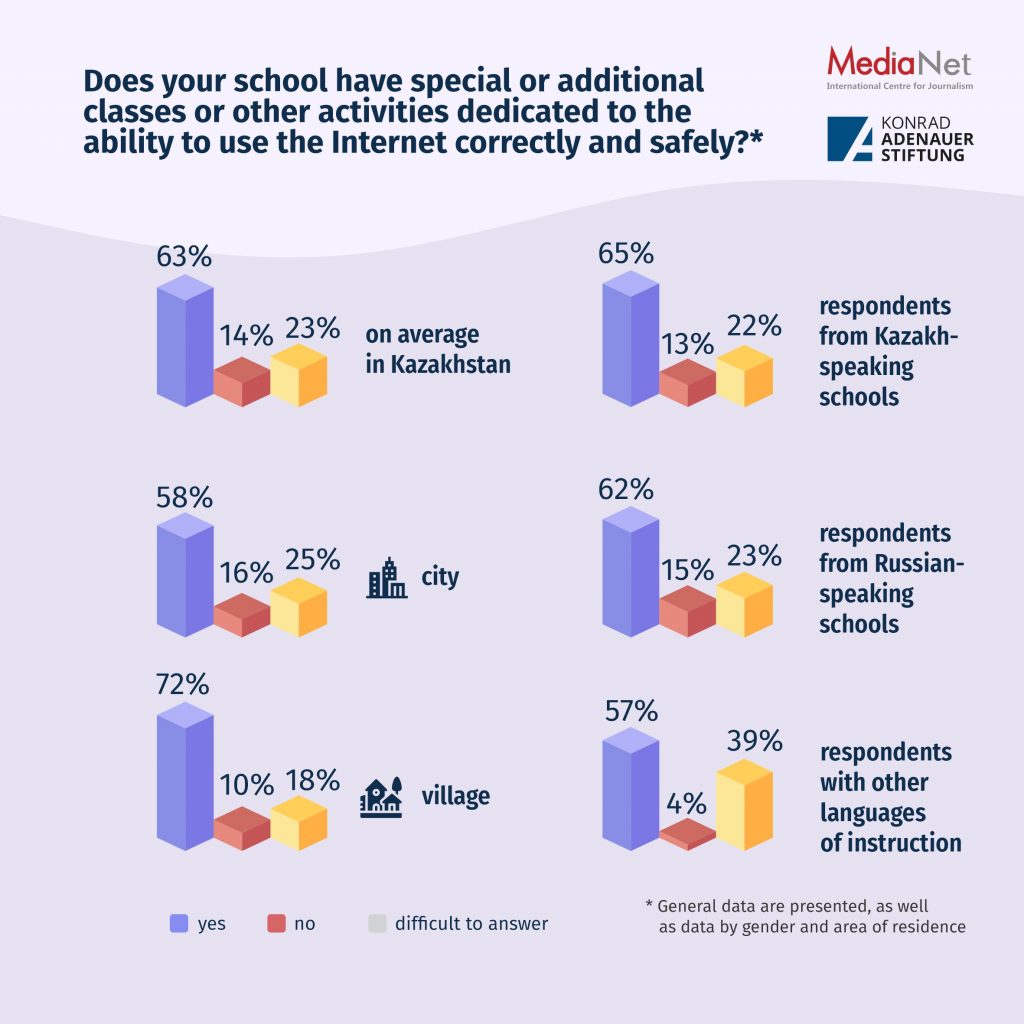
Nowadays the Internet is becoming more accessible in Kazakhstan. According to Internet World Stats, Internet penetration in Kazakhstan reached 86% in 2022. Perhaps this is due to the fact that Internet services are getting cheaper. Thus, data from the Global Internet Accessibility Index show that in 2022 Kazakhstan ranked 5th out of 164 countries for the lowest Internet tariffs for broadband Internet connection per month – $ 10.8 ($ 0.7 cheaper than in 2021) and for mobile Internet (1 GB) – 0.8 dollars (0.1 cheaper than in 2021).
The rapid digitalization of society and the spread of Internet use in the country actualizes the problem of information literacy of the younger generation. Due to age characteristics, school youth who are just learning to think critically and observe information hygiene are considered the most vulnerable.
MediaNet International Centre for Journalism with the support of the Konrad Adenauer Foundation implemented a project to study the level of media and information literacy of Kazakhstani schoolchildren.
The study took place between September 23 and December 20, 2022. The main method of data collection was an online survey of 9th grade students. The survey was conducted by mass mailing a questionnaire for self-completion by students in schools in Kazakhstan. In total, more than 6,800 students took part in the survey. According to the results of processing and “cleaning up” the data, 5,922 questionnaires remained for analysis.
“More than 60% of 14 and 15-year old teenagers spend 3 and more hours online”
According to the study, 92% of schoolchildren aged 14-15 years prefer to use the mobile Internet. This indicator is slightly higher among girls and in the Kazakh-speaking environment, and is expected to decrease in the group of those who are on the Internet every day for 5 or more hours.
In general, the structure of daily Internet use by duration in hours, obtained from the survey results, indicates that more than 60% of adolescents aged 14-15 years spend 3 or more hours online. Moreover, the longer the daily duration of Internet use, the smaller the proportion among boys, and the proportion among girls, on the contrary, increases.
The same trend is observed depending on the language of instruction. Among the students of schools with the Kazakh language of instruction, the proportion of those who use the Internet decreases depending on the duration in hours. And in schools with Russian and other languages of instruction it increases.
Fig. 1 – The structure of daily use of the Internet, including social networks and messengers by duration in hours, %
“9 out of 10 students use the Internet every day to communicate in messengers and social networks”
Everyone knows that the Internet is attractive to teenagers not only as a source of information, but also as a means for communication, cognition, self-expression and recognition. This is confirmed by the survey results we have received:
- 9 out of 10 students use the Internet every day, primarily for communication in messengers and social networks
- 8 out of 10 watch YouTube every day
- Also, 8 out of 10 log in to the Internet every day for training and educational purposes.
So, according to the survey, the most popular activities on the Internet among 14-15-year old teenagers can be the following:
- 80-91% – the use of interactive resources: messengers, social networks, YouTube, which allow not only to learn new things, but also to communicate both unilaterally (commenting, posting publications, posts, videos, etc.) and bilaterally in order (messaging, photos, audio, video, etc.). These resources are more in demand among girls and in the Russian-speaking environment.
- 57-79% – educational and cognitive resources: searching for information when preparing homework, using educational portals, searching for information by interests. These resources are more in demand among girls and in the Kazakh-speaking environment.
- 29-55% – entertainment resources: online games, online cinemas and online stores. These resources are more in demand among guys and in the Russian-speaking environment.
- 47-49%: news resources. These resources are more in demand among guys and in the Kazakh-speaking environment.
Fig. 2 – Types of activity on the Internet and social networks depending on the duration of daily Internet sessions, %
Another hypothesis that we were able to test is that due to academic failures, children are trying to escape from problems to another reality in order to be realized there, which leads to a longer stay online. According to the structure of the duration of daily Internet use in hours, there is a slight excess of the share of using 5 or more hours in groups with academic performance “I get a grade of “4” and “3” in all subjects” and “I get a grade of “3” and below in all subjects” (27% each with an average of 25%).
At the same time, the distribution of responses by type of activity makes you think. In groups with grades of “4” and “3” and “3” and lower, the proportion of those who prefer to play online games (36% and 39% with an average of 28%), watch feature films (22% and 26% with an average of 21%) is noticeably higher and watch videos on YouTube (55% and 58% with an average of 52%).
Thus, the results of the study allow us to talk about the relationship between academic performance and the choice of activities on the Internet, but, unfortunately, there is not enough data to determine the dependence of variables and the presence of an escapist tendency in the behavior of adolescents with low academic performance.
“Schoolchildren are not inclined to perceive the Internet as a source of threats”
With the help of virtual space, teenagers can easily satisfy their communication needs, as well as independently form their social circle. At the same time, it is likely that they are not fully aware of the risks associated with misinformation and manipulation in the network. In this regard, it is important to determine the level of information literacy of adolescents aged 14-15 years by assessing the skills of using information on the web.
Four groups of skills were identified for the assessment:
- Skills of compliance with the principles of security and protection of information on the Internet.
- Skills of searching for information on the Internet.
- Skills of critical perception of information on the Internet.
- Skills of verification and dissemination of information on the Internet.
The first group of skills was evaluated according to 9 parameters presented in the diagram below.
In general, the survey shows that the majority of students adhere to the basic rules of Internet security. 69% try to use two-factor identification. About the same number of respondents limit contacts with strangers in social networks and ignore messages from unfamiliar addresses. 66% use different passwords for different services.
At the same time, it should be noted that the habit of opening links and messages sent from unfamiliar addresses or contacts is more typical for guys living in rural areas who attend school with the Kazakh language of instruction. Different passwords on services, as well as the use of antivirus programs, are more often used by guys, students of schools with the Russian language of instruction.
At the same time, the study shows that students are not inclined to perceive the Internet as a source of threats. Almost every second person explains their inattention to security issues on the network by the fact that he has nothing to hide on the Internet. Among the students of schools with Kazakh language of instruction, there are twice as many who share this opinion as among the students of schools with Russian language of instruction (52% vs. 28%).
Also, this opinion is more typical for students who spend up to 2 hours a day on the Internet (44% with an average of 40%).
Interestingly, 62% of teenagers have parents who do not have access to their social media accounts. Only one in three (34%) turns to adults for help if they cannot find the necessary information on the Internet, and 38%, even if they doubt the veracity of the information, do not contact their parents. This is especially noticeable in the Russian-speaking environment and among those who spend 5 or more hours a day on the Internet (20% and 19%, respectively, with an average of 29%).
Fig. 3 – Skills of compliance with the principles of security and protection of information on the Internet, %
“82% have no difficulty finding the right information and identifying the right sources on the web”
The second group of skills (online searching skills) was evaluated by 7 statements presented below.
It turned out that the absolute majority of students (82%) have no difficulty finding the right information and identifying the right sources on the web. Also, the majority of respondents note that searching for information on the Internet does not take them much time. At the same time, it is noticeable that guys, students of schools with the Russian language of instruction, students with good academic performance are less likely to experience difficulties with the search.
Most students are not limited to viewing the results of the query only on the first page. The first search results are more often trusted by guys, students with low academic performance, those who spend no more than 2 hours on the Internet a day.
More than half of the respondents prefer to search independently, without the help of more experienced people. In this case, queries are usually formulated linearly, without the use of additional filters and special characters.
Fig. 4 – Online searching skills on the Internet, %
“Not enough attention is paid to the fact that their online activity can be monitored”
To assess the third group of skills, respondents were offered 8 statements. The data obtained indicate that most students periodically clean their subscriptions and contacts in social networks, but do not pay enough attention to the fact that their online activity can be monitored and the same type of information may appear in the feed.
Critical information perception skills are manifested in ignoring pop-ups and recommendations, as well as in using different sources of information and comparing different points of view. Moreover, the less time a student spends on the Internet per day, the weaker these skills manifest themselves.
The practice of compiling a list of reference sources of information is not sustainable. More often, students of urban schools and schools with the Russian language of instruction, as well as those who spend 5 or more hours on the Internet a day have reference sources on the network.
The fact that they can change their attitude to the event after watching just one news is most often said by girls, students of rural schools and schools with the Kazakh language of instruction.
The vast majority of students are confident that they can distinguish truthful information from fake (70%). Boys and students of city schools feel especially confident.
This belief is based on the fact that information received from the network often raises doubts and gives grounds for rechecking in other sources before its dissemination. It should be noted that the information from the network causes the greatest distrust among girls, students with good academic performance and those whose daily stay on the Internet is limited to 2 hours.
Fig. 5 – Skills of critical perception of information on the Internet, %
“The skill of using special fact-checking services is poorly spread”
The skills of checking and distributing information on the Internet were evaluated on the basis of the following 8 statements (Fig.6).
According to the survey, 72% of students indicate the presence of basic fact–checking skills – they check the original source and the date of publication before sending it to another person. There is also a high awareness (68%) about the existence of legislative responsibility for reposting fake information on the Internet.
At the same time, the skill of using special fact-checking services is poorly spread (29%). Most often, guys, students with low academic performance, as well as those who spend no more than 2 hours a day on the Internet spoke about the use of such resources.
Fig. 6 – Skills of fact-checking and distributing information on the Internet, %
Thus, the conducted research proves once again that the Internet plays an important role in the everyday life of the younger generation. More than 60% of teenagers aged 14-15 years spend 3 or more hours online. In the first place (80-91%) is the use of interactive resources, such as messengers, social networks, YouTube, which allow not only to get acquainted with this or that information, but also imply two-way or one-way communication.
The study shows that there is a well-established belief among teenagers that the Internet does not pose a danger to the safety of personal data, although most note the importance of confidentiality. At the same time, there is a relatively low popularity of fact–checking services – only 29% of students have applied to them at least once.
In this regard, educational courses on improving the media literacy of young students with a focus on strengthening information verification skills and strengthening critical thinking may be in demand.
ENG_Медиа_и_информационная_грамотность_школьников_слайды_2——————————————
The study of the level of media and information literacy of students in grades 9 of schools of the Republic of Kazakhstan was conducted by the MediaNet International Center for Journalism with the support of the Konrad Adenauer Foundation and the assistance of the Secondary Education Committee of the Ministry of Education of the Republic of Kazakhstan in September-December 2022.
Any use of data from the article is possible only with the hyperlink to the material.
Contacts:
Alyona Koshkina, Media Literacy Program Manager at MediaNet International Centre for Journalism, alyona@medianet.ngo


